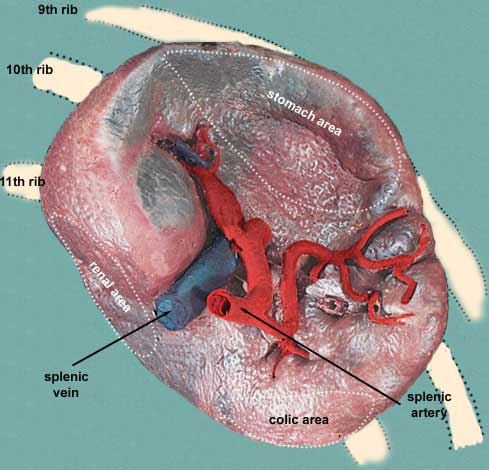The spleen consists of a diaphragmatic and visceral surface.
Diaphragmatic surface - faces upward, backward and to the left. The diaphragm
separates the spleen from the 9th, 10th and 11th ribs.
Visceral surface
- gastric - greater curvature of stomach
- renal - faces medially and caudally. Related to upper ventral
surface of left kidney.
- colic - left (splenic) flexure
Superior extremity - directed toward the vertebral column
Inferior extremity - rests on the left colic flexure and phrenicocolic
ligament
Associated ligaments of the spleen (double layers of peritoneum:
- phrenicocolic ligament
- gastrolienal ligament
- lienorenal ligament
|

|
